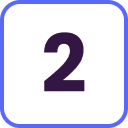Understanding ADHD Neurofeedback Therapy
ADHD stands for Attention Deficit Hyperactivity Disorder, previously known as ADD (Attention Deficit Disorder). Poor parenting, lack of motivation, lack of effort, or diminished intelligence are not the causes of ADHD. People with ADHD may also struggle with executive functioning (tasks related to organization, planning, and working memory). Someone who works with ADHD symptoms will usually have trouble with tests related to simple attention, complex attention, cognitive flexibility, processing speed, reaction time, and overall executive functioning.
Neurofeedback therapy for ADHD involves real-time monitoring of brainwave activity using quantitative electroencephalography (qEEG) technology. During sessions, individuals receive audio or visual feedback based on their brainwave patterns. This process teaches individuals to regulate their brain activity, improving attention, impulse control, and executive function.
Research studies have shown promising results for neurofeedback therapy in the treatment of ADHD also with ADHD adult testing. Following neurofeedback therapy sessions, studies have demonstrated improvements in attention, impulse control, and academic performance. Additionally, neurofeedback therapy may have lasting effects, with many individuals experiencing sustained benefits even after completing treatment.
One of the critical advantages of neurofeedback therapy for ADHD is its non-invasive nature. Unlike medication or surgical interventions, neurofeedback therapy does not involve the use of drugs or invasive procedures. Instead, it offers a safe and natural approach to managing ADHD symptoms with minimal side effects.
Our Approach to ADHD Neurofeedback
in Toronto
People who have ADHD usually demonstrate an excess or dominance or slow brainwave patterns such as delta (the brainwave dominant during sleep) and theta (the brainwave associated with daydreaming, tuning out, and being internally aware). This imbalance or excess may explain why people with ADHD struggle with regulating their focus and attention. A reduction in calm and relaxed brain wave patterns (a reduction in sensorimotor rhythm) can help explain struggles with symptoms of hyperactivity. People with ADHD may have areas in the brain that communicate too quickly with one another and may explain some impulsive tendencies.
Once we figure out what brain wave patterns are related to your symptoms using Neurofeedback Therapy for ADHD, we can design a personalized program to target and improve them. During each session of Neurofeedback Therapy for ADHD, we monitor your brain waves in real time and when there is greater balance of brain wave patterns we reward you with video and sound. These audio and visual rewards help train and guide your brain to have improved balance and improve your symptoms.
At our clinic, we specialize in providing neurofeedback therapy for ADHD tailored to each individual's unique needs. Our experienced clinicians utilize state-of-the-art qEEG technology to assess brainwave activity and develop personalized treatment plans. We understand that every individual with ADHD is different, and our goal is to provide comprehensive support to help each person reach their full potential.
If you or a loved one is struggling with ADHD, consider exploring neurofeedback therapy as a treatment option in Toronto. Contact us today to learn more about how neurofeedback therapy for ADHD can help improve attention, impulse control, and overall quality of life.

Understanding the Impact of Attention and Focus on Daily Life in Toronto
Navigating the world effectively depends primarily on our capacity for attention and concentration. These cognitive abilities allow us to focus on chores, learn, and make wise judgments. When these abilities are compromised, many facets of our lives might suffer greatly.
Students with attention and concentration problems could find it challenging to stay up with courses, do homework, and pass tests in a classroom. In the workplace, these difficulties may lower general job quality, cause mistakes, and impede output.
Attention and concentration are equally important in daily life. They help us make good connections, have meaningful conversations, and pursue interests and hobbies. A compromise of these functions could cause misinterpretation, less enjoyment from activities, and frustration.
The Role of Neurofeedback in Improving Attention and Focus
Neurofeedback treatment and ADHD adult testing is a potential method for improving concentration and attention. It enables people to learn how to train their brain activity and enhance their cognitive skills by giving them real-time feedback.
Sensors are applied to the scalp to track brainwave patterns during a neurofeedback session. The person may see their brain activity in real-time as these patterns are shown on a screen. Through visual and auditory stimuli, the person learns to recognize and alter brainwave patterns linked to concentration and attention.
Improved concentration and attention result from the brain's gradual learning to self-regulate and sustain optimum brainwave activity. This drug-free, noninvasive method has shown encouraging results in helping people improve their cognitive function and overcome attention problems.

Combining Neurofeedback with Other Therapies for Optimal Results
Neurofeedback therapy can be used as a standalone treatment or in conjunction with other therapies for optimal results. For example, combining neurofeedback with cognitive-behavioural therapy (CBT) can help individuals develop coping strategies and behavioural techniques to enhance their attention and focus.
Additionally, neurofeedback can complement medication management for attention-deficit/hyperactivity disorder (ADHD). By improving brain regulation, neurofeedback may reduce the need for medication or enhance its effectiveness.
Maintaining Focus and Attention Improvements: Long-Term Strategies
Even though neurofeedback treatment may result in notable increases in concentration and attention, it's crucial to use long-term methods to sustain these benefits. A nutritious diet, regular exercise, and enough sleep are lifestyle choices that significantly improve cognitive performance and brain health.
A calm and concentrated mind may also be developed by engaging in mindfulness practices like meditation and deep breathing exercises. Puzzles and brain games are examples of cognitively demanding activities that might help maintain concentration and attention over the long term.
Unlocking Your Brain's Potential: Beyond the Basics of Neurofeedback Therapy for ADHD
For many Canadians, dealing with the daily challenges of ADHD can feel like an uphill battle. Perhaps you've heard of neurofeedback therapy for ADHD and want to learn more about how it helps improve concentration, attention, and executive functioning. Our main page discusses the main ideas and benefits, but let's look at other aspects that make this method transformative.
How Your Brain Learns and Grows with Neurofeedback
One of the most exciting aspects of neurofeedback therapy for ADHD is its foundation in neuroplasticity. It's your brain's incredible ability to reorganize itself by forming new neural connections throughout life. Think of your brain as a dynamic, adaptable organ, not a static one. When you participate in neurofeedback, you are actively guiding your brain to adopt more optimal brain wave patterns. The real-time feedback you receive serves as a gentle guide, assisting your brain in recognizing and strengthening the optimal brainwave states associated with attention, focus, and calmness. Over time, these new, more efficient pathways may become strengthened. It's a bit like learning to ride a bike – initially, it requires conscious effort, but eventually, it becomes second nature.
The Nuance of Personalization: More Than Just Brainwaves
In order for neurofeedback therapy for ADHD to work, it's not enough to just read brainwaves during the QEEG assessment. It's also based on a method that is truly unique to each person. ADHD affects each person in their own unique way; your journey is shaped by your specific difficulties and strengths. Neuropotential Clinics knows that there is no such thing as a one-size-fits-all solution. Our psychologists make a treatment plan for you that takes into account your symptoms, comorbidity, complexity, and barriers to recovery. We work together, and your feedback helps us make the therapy work better for you.
Integrating Skills for Real-World Success
Neurofeedback therapy aims to help you improve your brainwave patterns. This approach may support enhanced self-regulation. This could mean it is easier to concentrate or engage more fully in daily tasks. We believe that improving brainwave patterns can help you reach your potential. This could apply to academic pursuits, professional settings, relationships, and personal well-being.
If you are curious about how neurofeedback therapy might offer a lasting positive impact, we encourage you to connect with us. Neuropotential Clinics aims to help you work towards a more resilient brain and navigate the world with greater ease.
How Do I Get Started?

We start off with a Clinical Intake Interview. This is where we review background, medical, and developmental history, your symptoms and their severity, major life events and do our best to conceptualize the uniqueness of your case.

The next step is a Quantitative Electroencephalogram (QEEG) baseline recording. Just as a stethoscope is placed on your chest to listen to your heart beat, electrodes are placed on your scalp to record your brainwave activity for analysis.

Using the information from your clinical intake interview, baseline recording, and intake package we put the pieces together to create a custom Neurofeedback Therapy for ADHD that is tailored to suit your needs.

We debrief the results, help you understand the different statistics and brainwave patterns involved in your program, as well as help answer your questions before you can begin Neurofeedback training.
FAQ: Enhancing Focus and Attention with
Neurofeedback Therapy
How does neurofeedback therapy improve attention and focus?
Neurofeedback therapy is like a workout for your brain! It uses sensors to monitor your brainwave activity in real-time, showing you how your brain is functioning. By identifying and modifying brainwave patterns associated with attention and focus, you can essentially train your brain to self-regulate and maintain a more focused state. Think of it as learning to control your brainwaves to enhance your cognitive abilities.
What can I expect during a typical neurofeedback session for attention and focus enhancement?
Neurofeedback sessions are designed to be relaxing and comfortable. Sensors are placed on your scalp, but it's completely painless. You might be asked to watch a video or play a simple game while the system monitors your brainwaves. The cool part is that you'll get real-time feedback, often through visual or auditory cues, which helps guide your brain toward the desired brainwave patterns for improved attention and focus.
Can neurofeedback be combined with other therapies or treatments for attention and focus?
Yes, definitely! Neurofeedback can be an excellent complementary therapy to other treatments you might be receiving. For example, it can be used alongside cognitive-behavioural therapy (CBT) to help you develop coping strategies and behavioural techniques for managing attention and focus challenges. It can also be used with medication management for ADHD, potentially reducing the need for medication or enhancing its effectiveness.
I'm an adult who suspects I have ADHD. How exactly might neurofeedback assist me?
Neurofeedback for adult ADHD is a non-invasive method that may help you train your brain for improved focus and self-regulation. During sessions at Neuropotential Clinics, we'll use sensors to monitor your brain activity in real time. This feedback can help you learn to balance ad regulate brainwave patterns more commonly associated with attention and less with distraction. Over time, this training may translate to better concentration at work or home, reduced impulsivity in conversations and decisions, and an increased sense of calm.
Beyond focus, what other areas of my life could potentially see positive changes with neurofeedback at your clinic?
That's a great question! While improved focus is a primary goal for many adults with ADHD, neurofeedback at Neuropotential Clinics may offer broader benefits. Your ability to organize tasks and plan your day may become easier. Some clients report better emotional regulation and experience fewer intense mood swings. Additionally, neurofeedback could contribute to more restful sleep by promoting more relaxed brainwave patterns. Overall, many individuals may experience greater well-being and confidence as they gain better control over their attention and impulses.
How many neurofeedback sessions might I need to notice a real difference in managing my adult ADHD symptoms?
It's important to understand that neurofeedback isn't a quick fix, and the number of sessions needed can vary from person to person. Typically, sessions over months are recommended to allow your brain to learn and consolidate new patterns. At Neuropotential Clinics, our experienced team will work with you to develop a personalized treatment plan based on your specific needs and progress. While some individuals may notice subtle changes relatively early on, significant, lasting improvements usually require consistent training and commitment.
Research Articles on ADHD
This section is meant to highlight research that has been done in the field. The following brief summaries are resources that we have gathered for the public. For an in-depth look at each research article we recommend using the citation to find and read the original article. We hope to add additional resources when possible!


